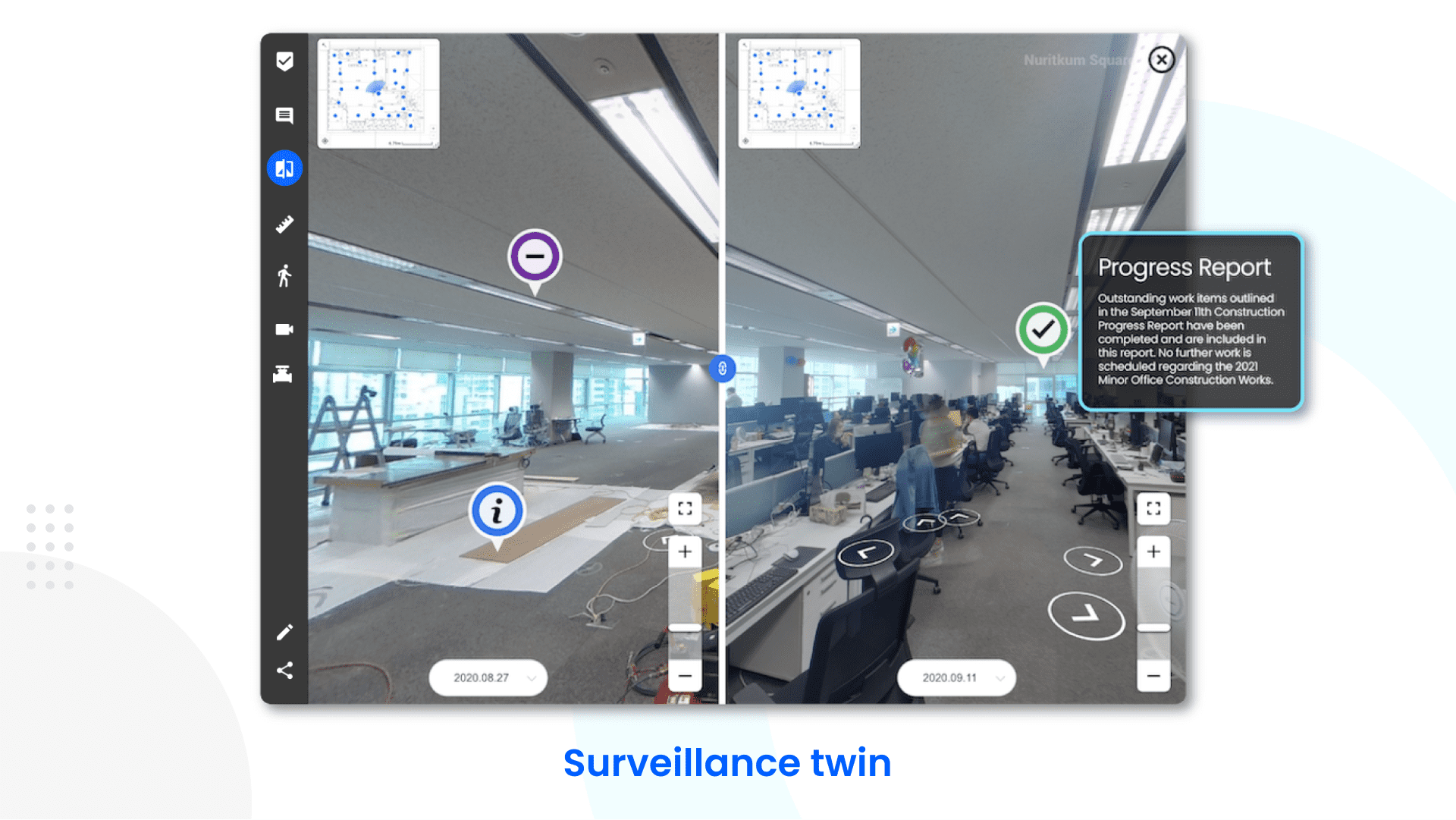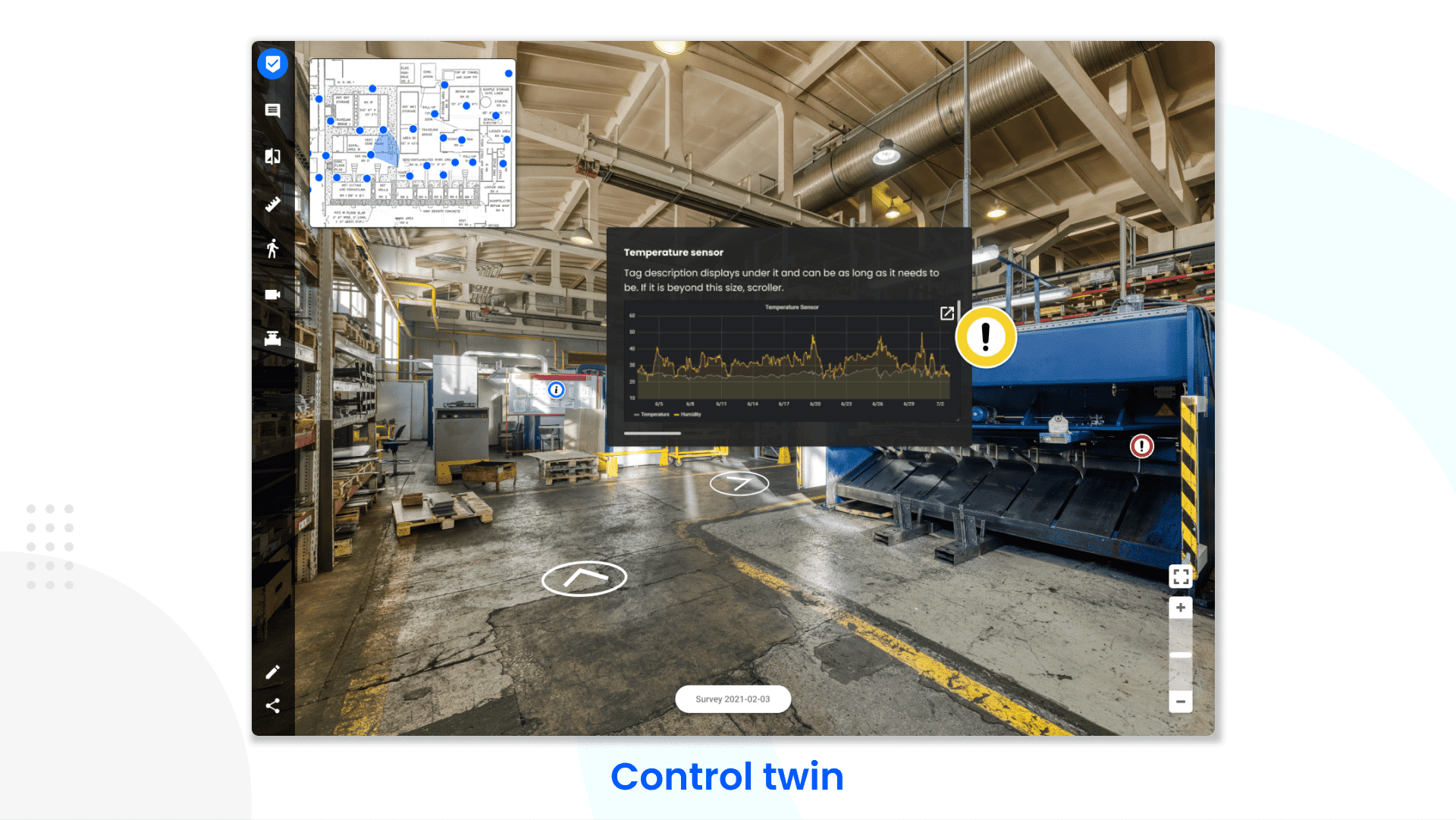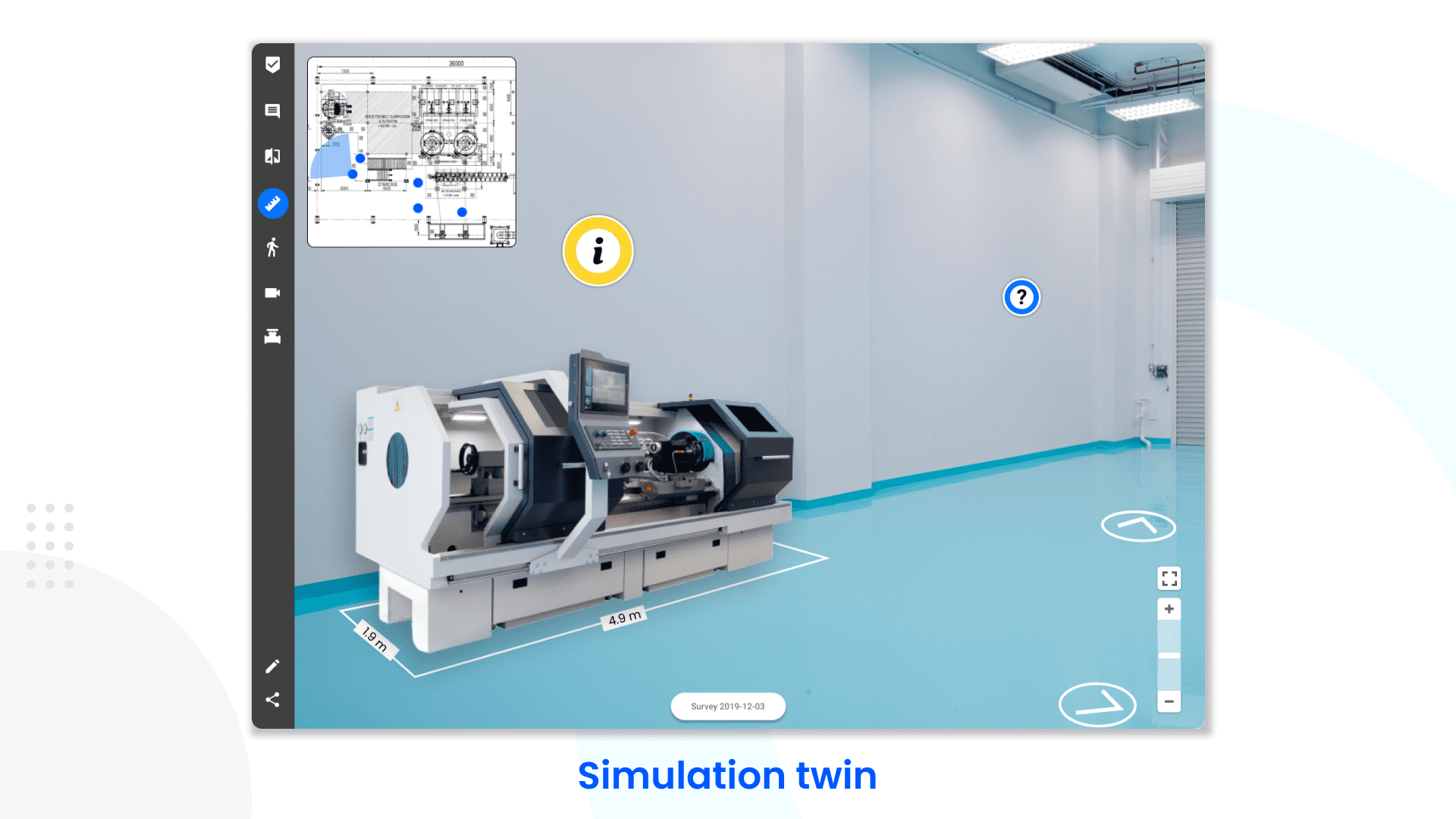The digital twin comes in different forms and functions, depending on your requirements and objectives. We talked about that before in a prior article, “What is a digital twin and why you need one.” But did you know there are certain types of digital twins that can take you to the past, present, or even back to the future?
“Great Scott! Doc. Are you telling me you built a time machine…?”
Well, digital twins give you insight over critical assets at certain points in time, in the past or at present, and even in the future! So yeah, they’re sort of like digital time machines.
Just to recap:
A digital twin is a virtual representation of a physical space, synchronized at a specified frequency and fidelity.
In that article, we also explained that digital twins can be used on assets, processes, and systems. But in truth, this is simply a matter of perspective and is molded to the will of the digital twin owner. Regardless of the type, digital twins can bring unprecedented value to your business when it comes to managing assets, spaces, information, and people, and connecting them remotely.
But there’s more than one way to slice and dice how digital twins function. There are different types of digital twins depending on their level of development (for example, how integrated a twin is with its physical counterpart). Digital twins are also flexible because how they are used will be different for every business. Choosing the right digital twin for you also depends on which exact time you want to go to - past, present, or future. You may even find that you need more than one type of digital twin or a combination of some for different aspects of your business.
Let’s hop straight on to the first type of digital twin time machine.
1. Surveillance Twin - a twin of what was
A surveillance twin (also called a status twin) is a digital twin that creates a digital replica of existing physical entities at a specific point in time. Surveillance twins are useful for capturing the physical status and situation of important assets and facilities. Surveillance twins are ideal for progress monitoring in construction, conducting land or site surveys, showcasing museums or art exhibitions, and even training. They also serve as a visual aid for customers to decide on their purchases, for example, real estate, cars, luxury bags, gadgets, etc.
That said, the interaction between the physical and digital twin, however, is limited. Any change to the physical entity must be recaptured in a new survey to maintain fidelity. You are also limited to what you can visually perceive, a state of the physical asset as it was.

A surveillance twin showing the construction progress of an office over several months.
2. Control Twin - a twin of what is
A control twin (also called an operational twin) is a digital twin that allows you greater access and visibility over your operations. Apart from providing you a digital representation of your physical entities, control twins give you more information and control over your operations and assets by integrating with your real-time sensor data monitoring systems and ERPs.
Control twins are more developed than surveillance twins when it comes to the level of interaction between the physical and digital twins. Because of this added layer of integration, control twins require greater investment in infrastructure and technologies in order to facilitate this continuous data exchange. Once implemented, however, this type of digital twin allows you to run operations and maintain assets efficiently, avert potential risks, respond to issues quickly, and reduce recovery time, everything remotely and from the digital twin. With control twins, you can update maintenance logs, order parts, for example, and pretty much execute any business function in your workflow.
Control twins are most useful for operating water, power, waste, utilities, oil and gas refineries, maintaining the condition of data centers, automating workflows of smart factories, and the like.

A control twin of an industrial manufacturing facility showing temperature sensor data of a machine.
3. Simulation Twin - a twin of what can be
The last type of twin allows you to run tests and simulations on them, compute future outcomes, and analyze results. The intention is to build a better understanding of future outcomes by conducting the experiments digitally, potentially saving you a lot of time, resources, and money. Simulation twins can either be a testing twin or a full simulation twin. A testing twin is not integrated with its physical counterpart while the simulation twin is.
Like the control twin, full simulation twins require greater investment in infrastructure, network, and effort to enable a fully connected physical and digital environment. Physical environments do not stay the same for long. It will be up to you to decide on what frequency your business needs to keep the two twins synchronized. There’s also the caveat that a simulated environment may not always mimic reality.
Simulation twins are useful for product development and design in industrial manufacturing, modeling intelligent transportation systems, and urban planning of smart cities.

A simulation twin showing a 3D rendering of a machine being fitted into an empty space in a real facility.
Conclusion
There are different types of digital twins available on the market with different sets of capabilities and limitations. There are even more ways to build them (ex. photographic, point cloud, 3D rendering, 3D simulation-all of which we will explore in a future article). Some are more suitable for specific operations and businesses than others.
That said, we hope this gives you a better idea of how digital twins can be useful for your assets. Regardless of WHEN you want to travel to, past, present, or future, digital twins have the power to transform your business and propel you towards digital transformation.
Beamo falls under surveillance twins but can integrate with your other systems to give you full visibility over the past, present, and future. Learn more about Beamo digital twins here.
Still having trouble deciding on which twin your business needs? Talk to us! We’d love to help you out.